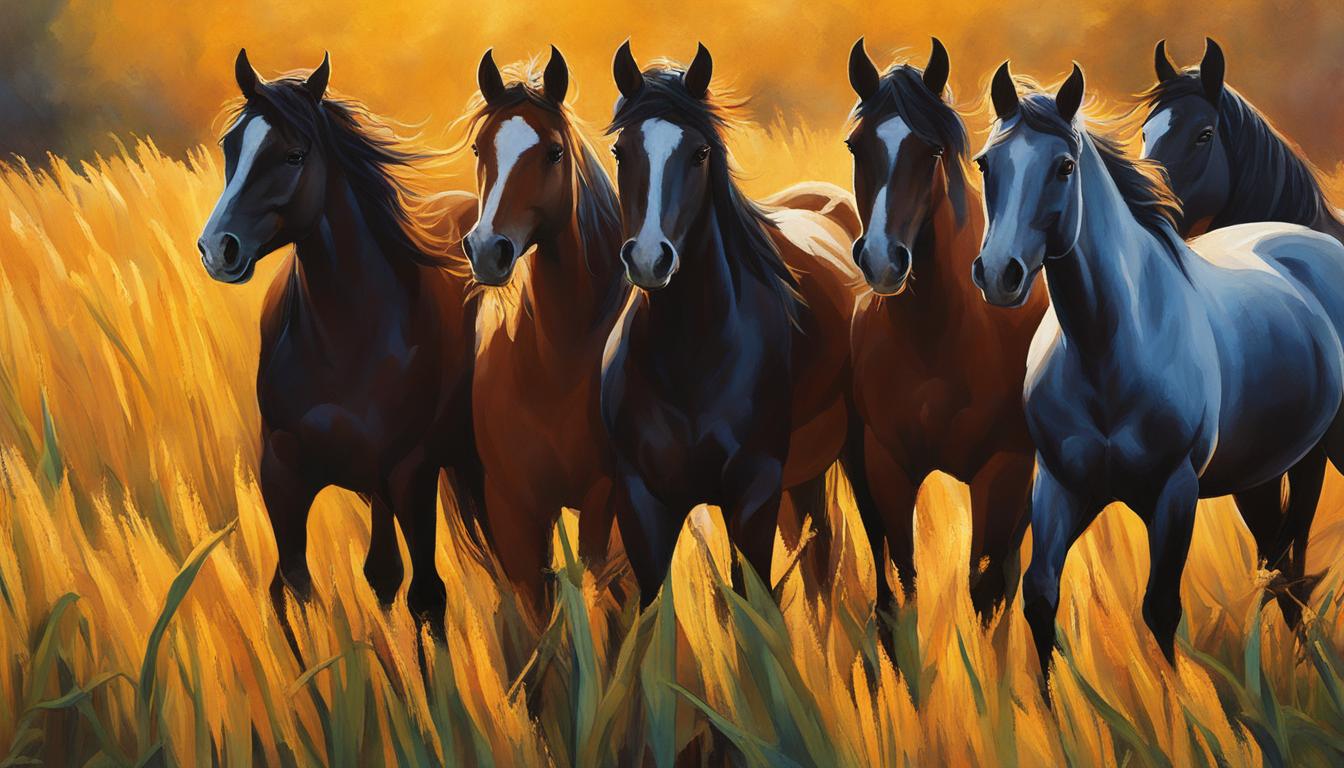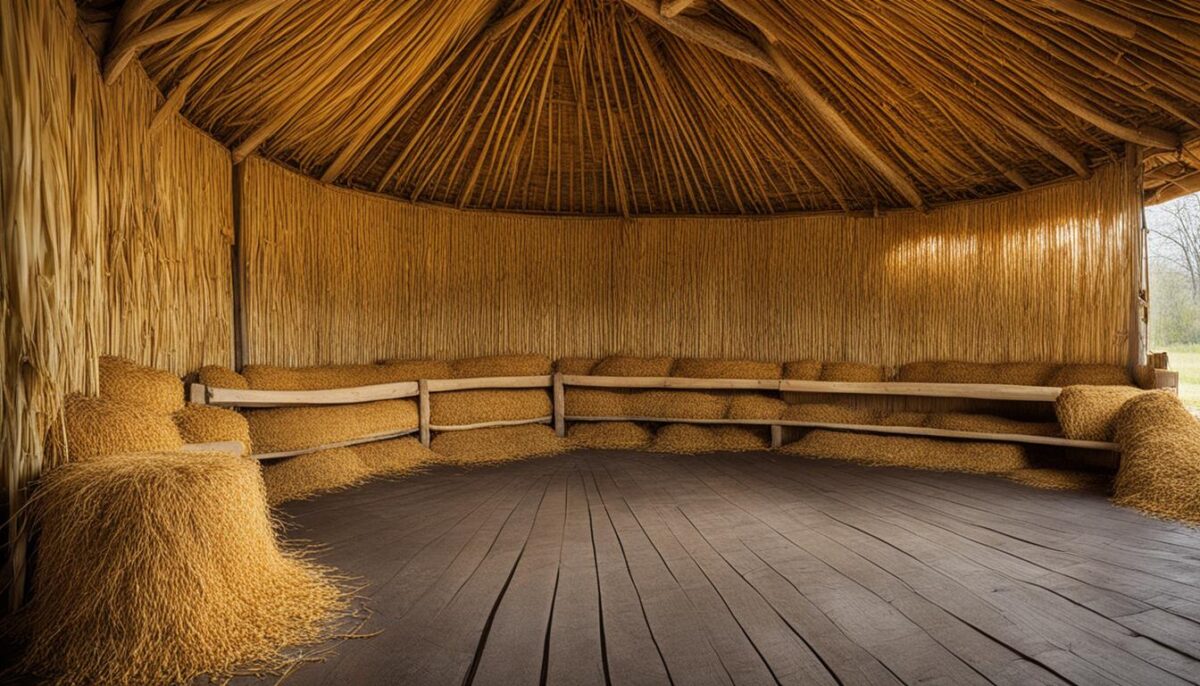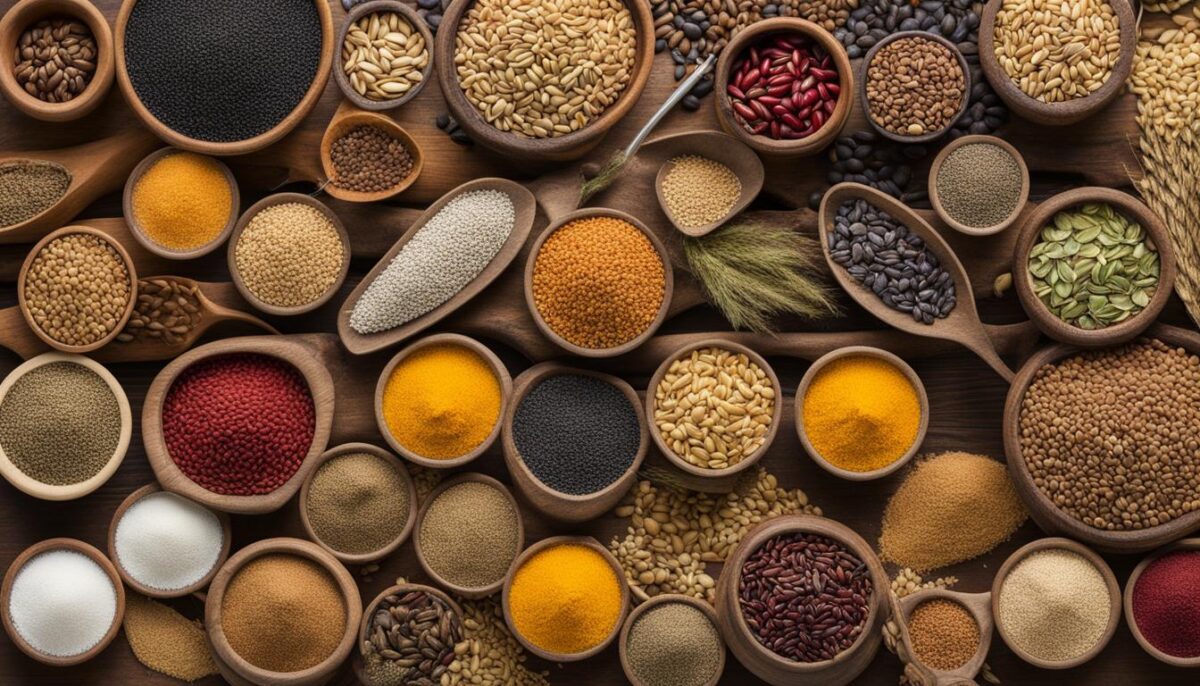When it comes to your horse’s diet, you might wonder if corn stalks are a suitable option. While corn products can be part of a horse’s diet, caution is required. In the past, horses enjoyed ear corn after harvest to help them stay healthy during winter. They would eat the kernels and chew on the cob. In some countries, horses even eat the fresh, whole corn plant. However, many horse owners now prefer buying ready horse feed and good-quality hay because it’s safer. Ear corn and stalks can have molds, producing toxins that might make horses sick. If corn is grown and stored well, it can add nutrition to a horse’s meals.
Key Takeaways
- Caution is necessary when incorporating corn products into a horse’s diet.
- Ear corn and corn stalks can have molds, potentially causing illness in horses.
- Corn stalks can provide nutrition when grown and stored correctly.
- Many horse owners opt for ready horse feed and quality hay.
- Do not feed corn stalks as a main portion of a horse’s diet.
The Historical Use of Corn in Horse Diets
Throughout history, the use of corn in equine diets has played a significant role in maintaining the health and well-being of horses. Traditional practices of feeding corn to horses varied across countries, and evolving knowledge of equine nutrition has led to shifts in feeding trends over time.
Traditional Practices in Feeding Corn to Horses
In the past, ear corn was a common choice for feeding horses, particularly after the fall harvest to help keep their weight stable during winter months. In countries like Peru, horses are given chopped whole corn plants while in parts of Northern Europe, corn silage serves as a valuable feed when fresh grazing is scarce. These traditional equine nutrition practices highlight the natural role corn has played in historical horse feeding.
Changes Over Time in Equine Feeding Trends
As the knowledge of equine nutrition improved, US horse owners began moving away from traditional practices and started to embrace commercially prepared horse feeds and quality hay. This shift in preference is due to the convenience and safety offered by these alternatives, eliminating potential health risks associated with feeding corn to horses.
Though traditional practices of corn in equine diets might still be useful in some circumstances, attention to modern understanding of horse nutrition is vital to ensure their overall health and well-being.
Understanding the Nutritional Value of Corn Stalks
The nutritional value of corn stalks tends to be lower than that of other equine diet components. Listed below is a comparison between the nutritional content of corn stalks and other common horse feeds:
| Feed | Protein | Energy |
|---|---|---|
| Corn Stalks | Low | Low |
| Alfalfa Hay | High | Medium |
| Timothy Hay | Medium | Medium |
| Grass Hay | Low | Low |
| Commercial Horse Feed | Variable | Variable |
As seen in the table, corn stalks are not as nutritionally dense as other horse feed content. Although their protein and energy levels are low, they might still be suitable as a supplemental feed for horses that require less energy in winter, or for those who are considered “easy keepers.”
Even though corn stalks might not provide all the necessary nutrients a horse needs, they can be incorporated into an equine diet carefully and in small quantities. This way, you ensure that your horse benefits from the nutritional value of corn stalks without causing weight gain or affecting their overall health.
Can Horses Eat Corn Stalks Safely?
Horse feed safety plays a significant role in equine health and well-being. Ensuring high-quality feed is crucial in preventing health risks. This begs the question, can horses consume corn stalks without any potential hazards? Let’s first examine the possible risks associated with feeding corn stalks to horses.
Potential Health Risks of Feeding Corn Stalks to Horses
Feeding horses poor-quality corn stalks can lead to issues, including sickness and, in some cases, death. Molds and bacteria in contaminated corn stalks can cause conditions such as moldy corn poisoning or blind staggers due to mycotoxins. Bacterial contaminations like botulism or listeriosis are also possible health risks in horses.
Unfortunately, these molds and bacteria are often difficult to detect by the naked eye, making it challenging to spot the risks before it’s too late. Not every horse is equally susceptible to these equine health risks, but maintaining high-quality horse feed is crucial to minimize potential hazards.
Identifying Quality Feed for Your Horse
To keep your horse safe and healthy, it’s essential to identify high-quality feeds, such as hay or commercially prepared horse feeds. However, if you decide to utilize corn stalks in their diet, you must ensure they are of the best quality.
Here are some guidelines to help you identify safe and nutritious feeds for your horse:
- Inspect the corn stalks visually for signs of mold or contamination.
- Observe any unusual smell, as this can indicate the presence of mold or bacteria.
- Consult with a veterinarian or equine nutritionist for recommendations on specific feed types and brands suitable for your horse.
- Store the feeds in a clean, dry area to prevent contamination and spoilage.
Meticulously following these guidelines can help mitigate the risks associated with feeding corn stalks to your horse, promoting their well-being and overall health.
Alternative Uses for Corn Stalks in Horse Care
While it’s important to consider the safety and nutritional factors when using corn stalks for feeding horses, their potential alternative uses provide additional benefits in horse care. Corn stalks can be a valuable component in both bedding material and supplemental horse forage during the winter months.
Using Corn Stalks as Bedding Material
Corn stalk bales have proven to be an effective bedding option for horses, offering a cheaper alternative to straw. Corn stalk bedding is absorbent, providing comfort and cleanliness while also being bio-degradable. Horses can benefit from the soft and cushioned surface to support their joints and rest comfortably after a long day of activity.
Supplemental Forage: The Role of Corn Stalks
Providing horses with supplemental forage during winter months can be essential in maintaining their physical and mental well-being. Corn stalks can serve as a low-energy feed source that allows horses to continue chewing without the risk of becoming overweight. By including corn stalks in their diets as a supplemental horse forage, you can help prevent overconsumption of higher calorie feeds and maintain your horses’ overall health.
To sum up, exploring alternative uses for corn stalks in horse care can offer valuable benefits in terms of providing a comfortable bedding material and an additional forage source during tough winter months. Always ensure that the corn stalks you use are of good quality, grown and stored correctly to prevent any potential health risks and to provide the best care possible for your equine companions.
Mitigating the Mycotoxin Risks in Horse Feed
To protect your horse from mycotoxin risks in their feed, it is crucial to take preventative measures and ensure they’re consuming safe horse feed. Below are some tips to avoid mold contamination and minimize the chances of mycotoxin poisoning in your horse:
- Inspect your horse’s feed for visible signs of mold or spoiling, even though it can be difficult to detect.
- Store feed properly by keeping it dry and well-ventilated, and avoid feeding any moldy or damp hay or grain.
- Take extra care when feeding corn stalks or other high-risk feeds, and consider using an alternative feed if there’s a concern about potential contamination.
- Learn about the common diseases related to mycotoxins, such as moldy corn poisoning and blind staggers, equipping yourself to recognize the symptoms of intoxication.
- Consult a veterinarian or equine nutritionist for advice on selecting safe and nutritious feed for your horse.
The table below shows a comparison between safe horse feed options and their potential mycotoxin exposure risk:
| Feed Type | Mycotoxin Risk | Key Considerations |
|---|---|---|
| Quality hay | Low | Inspect hay bales for visible mold or dampness, and store in a dry, well-ventilated area. |
| Corn stalks | High | Thoroughly inspect for signs of mold or spoilage, and consider alternative feeds if contamination is suspected. |
| Commercial grain feeds | Low to Medium | Choose reputable brands with quality ingredients, and store in a dry, well-ventilated area. |
| Alfalfa | Low | Similar to hay, inspect for mold or dampness, and store in a dry, well-ventilated area. |
In conclusion, by staying vigilant and prioritizing feed quality and safety, horse owners can reduce mycotoxin risks and ensure a safe horse feed for their equine companions. Take necessary precautions to minimize the chances of mold contamination, and do not hesitate to seek professional advice when it comes to avoiding mold in feed and maintaining your horse’s overall health.
Building a Balanced Diet for Your Horse
Providing a balanced equine diet is essential for maintaining your horse’s overall health. The right diet should include essential nutrients while avoiding low-energy and low-protein feeds. The focus should be on quality hay and appropriate alternative feeds, especially during times when hay may be scarce or expensive.
Important Nutrients for Equine Health
There are several nutrients that are crucial for a horse’s well-being. These include carbohydrates, proteins, fats, vitamins, and minerals. With the right balance of these nutrients, your horse’s body will function optimally, ensuring better performance and overall health. To achieve the perfect balance for your horse, consider consulting with a professional equine nutritionist.
Balanced equine diets include essential nutrients like carbohydrates, proteins, fats, vitamins, and minerals.
Incorporating Alternative Feeds into Equine Diets
Although corn stalks can be used in a horse’s diet, they should never replace quality hay or be the main portion of their diet. Instead, alternative equine feeds such as straw can be mixed with quality hay and complete horse grain feeds to provide your horse with the necessary nutrients. Below is a table of different alternative equine feeds with their respective nutritional values to help you decide:
| Alternative Feed | Energy Content | Protein Content |
|---|---|---|
| Straw | Low | Low |
| Beet Pulp | High | Moderate |
| Alfalfa Cubes/Pellets | High | High |
| Rice Hulls | Low | Low |
When choosing alternative equine feeds, make sure to carefully assess their nutritional content and consult a professional to ensure that your horse receives a balanced diet. Remember that every horse is unique and might require specific adjustments for optimal health.
Avoiding Common Feeding Mistakes with Horses
When it comes to proper horse nutrition, there are common equine feeding mistakes that many owners make. Being aware of these mistakes and following horse care best practices can help maintain your horse’s health and well-being. Some typical errors include:
- Relying on low-nutrient feeds like corn stalks as main diet components, especially during winter when hay might be scarce
- Ignoring the quality of hay or other primary feed sources
- Overfeeding, leading to weight gain and other health issues
- Not adapting the horse’s diet to changes in exercise or seasonal requirements
One of the most crucial aspects of equine nutrition is striking a balance between the primary feeds and supplements. Avoiding the reliance on low-nutrient feeds like corn stalks is necessary, especially during winter months when hay might be scarce or expensive. Instead, focus on providing a diet that includes quality forage, complete horse grain feeds, and supplements if needed, ensuring your horse’s health and well-being in every season.
- Choose quality hay and feed that meets their horse’s nutritional requirements and energy needs
- Monitor their horse’s body weight and condition regularly, adjusting the diet as needed
- Provide clean and fresh water at all times
- Consult with a veterinarian or equine nutritionist if unsure about their horse’s dietary needs or if health issues arise
By being observant and adaptive to your horse’s needs, making adjustments when necessary, and seeking professional advice, you can avoid making common feeding mistakes and provide the best nutrition for your equine companion.
Conclusion
Feeding horses a balanced and appropriate diet is essential for their health and well-being. With various options available for equine nutrition, horse owners must carefully assess their horse’s specific needs and overall health to make informed decisions about the ideal feed for their equine companions.
Choosing the Right Feed for Your Horse’s Well-being
When selecting the best feed for your horse, consider factors such as the horse’s age, activity level, and any specific health requirements. While corn stalks can be used in certain situations, they should not be the main component of your horse’s diet due to their low nutritional value. Remember to prioritize quality hay and specially designed horse grain feeds to meet your horse’s nutritional needs.
The Importance of Expert Recommendations in Equine Nutrition
Professional advice is crucial in choosing the right feed for your horse. Consult with veterinarians and equine nutrition specialists who can guide you in determining the optimal diet tailored to your horse’s individual needs. This can help you avoid potential health risks and ensure your horse remains healthy and thriving, even when traditional feeds are scarce or expensive.
FAQ
Can horses eat corn stalks?
Yes, horses can eat corn stalks, but with caution. Corn stalks are low in protein and energy, and should not be the main component of a horse’s diet. They can be used as supplemental forage, particularly for “easy keepers” who need less energy in winter. It is essential to ensure the corn stalks are of good quality and free from mold or bacterial contamination.
What are the historical uses of corn in horse diets?
Historically, horses were fed ear corn, especially after fall harvest, to maintain their weight in winter. In countries like Peru, horses are fed chopped whole corn plants, while in parts of Northern Europe, corn silage is given when horses can’t graze outside. However, horse owners in the US have shifted toward commercially prepared horse feeds and quality hay for ease and safety.
Are there any health risks associated with feeding corn stalks to horses?
Yes, feeding poor-quality corn stalks contaminated with mold or bacteria can lead to health issues such as moldy corn poisoning, blind staggers (caused by mycotoxins), botulism, or listeriosis. It is crucial to ensure that corn stalks fed to horses are of good quality and free from toxins.
How can I mitigate the mycotoxin risks in horse feed?
Ensuring that the feed is grown and stored correctly is essential to minimize the chances of mycotoxin contamination. Be aware of the different weather conditions that promote mold growth and regularly inspect your horse’s feed for quality and freshness.
What are alternative uses for corn stalks in horse care?
Besides using them as feed, corn stalk bales can be effective bedding for horses, similar to straw. They also work as supplemental forage during winter, giving horses something to chew on without a risk of becoming overweight.
How do I build a balanced diet for my horse?
A nutritious diet for your horse should include essential nutrients and avoid feeds low in energy and protein. While corn stalks can be used, they aren’t a replacement for quality hay. Alternative feeds like straw can be mixed with quality hay and complete horse grain feeds. Additionally, consult a professional for guidance in creating the best diet for your equine companion.
What are some common feeding mistakes to avoid with horses?
Common mistakes include relying too heavily on low-nutrient feeds like corn stalks, particularly during winter when hay might be scarce. Being aware of these mistakes and making a conscious effort to balance your horse’s diet with proper feeds can help maintain their health and well-being.


